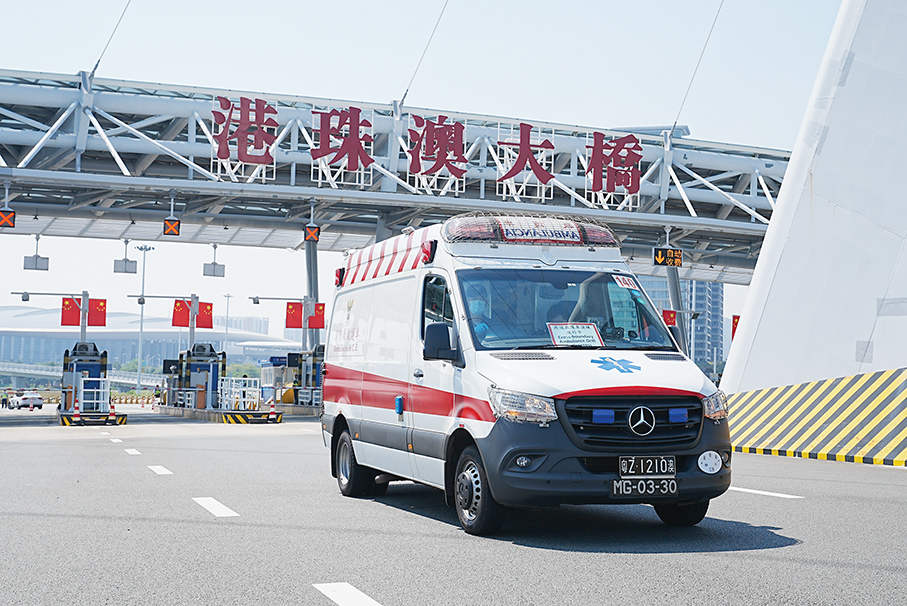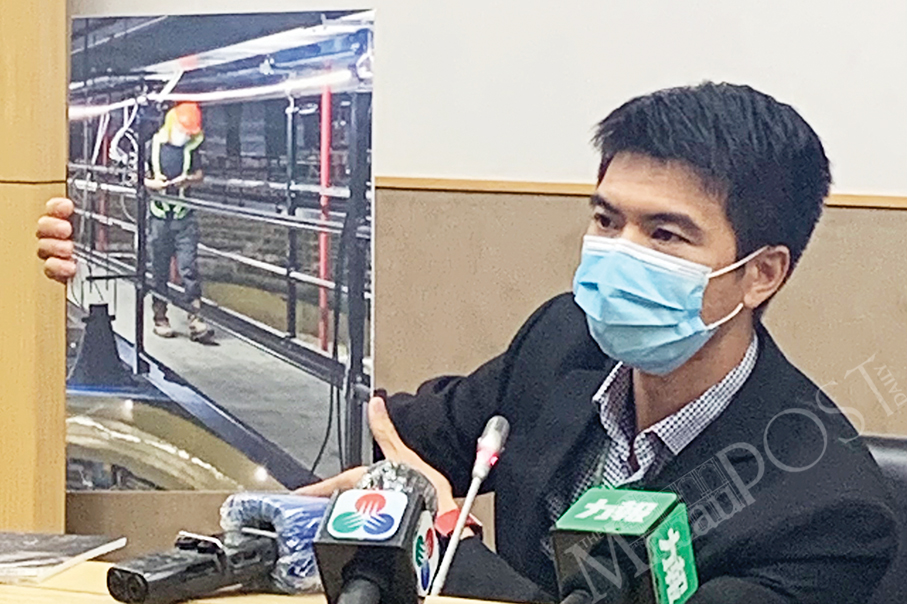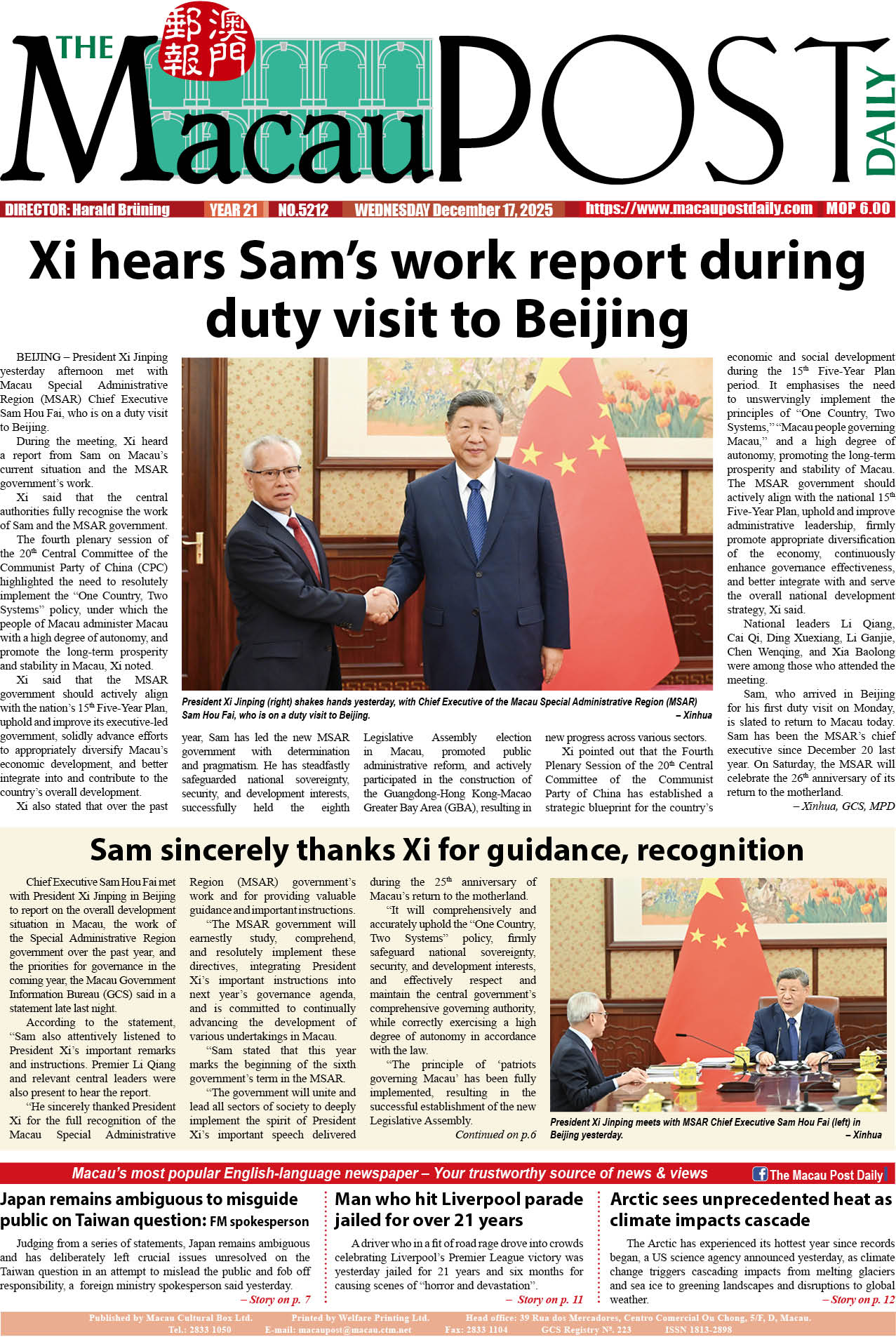Macau, Hong Kong and Guangdong Province have studied the feasibility of implementing a pilot cross-border ambulance transfer service between the three places since the middle of last year, and regarding the possible cross-border service between Hong Kong and Macau, Health Bureau (SSM) Director Alvis Lo Iek Long said late last month that in accordance with a plan being considered by the nation’s two special administrative regions (SARs), the door-to-door service would start initially with patients from Hong Kong to be transferred by Macau ambulances back to Hong Kong.
Directly-elected lawmaker-cum- clinical nurse specialist Wong Kit Cheng raised the issue in a written interpellation in late August expressing her concern about the slow progress of the pilot cross-border ambulance scheme between Macau, Hong Kong and Guangdong: “Due to certain differences in the healthcare systems of the three places, some residents still have the habit of using the healthcare services only in their places of residence… Although there are currently green lanes at the border checkpoints in Guangdong and Macau for speedy clearance in emergencies, there is still a need to switch ambulances at the border, which may pose risks to the patients in the process”.
In reply to Wong’s interpellation, Dr Lo pointed out in a statement that in order to enhance the quality and efficiency of cross-border healthcare services, Macau continues to have discussions with the relevant authorities of Guangdong and Hong Kong respectively on how and when to launch the implementation of the pilot cross-border ambulance transfer service designed to move patients by ambulance from the mainland, Hong Kong and Macau back to their respective place of residence, which, Dr Lo said, “are progressing in an orderly manner”.
Citing the Office of Secretary for Security Wong Sio Chak, Dr Lo said that concerning the door-to-door service of Guangdong and Macau ambulances, five ambulances and three fire-fighting vehicles under the Macau Fire Services Bureau (CB) have already been equipped with Guangdong-Macau dual licence plates, while in terms of the service between Hong Kong and Macau, the Fire Services Bureau already plans to make arrangements for the provision of the cross-border service of the two sides by eight ambulances, which, however, was still in the process of liaising with each other in respect of the eligibility of vehicles for patients’ transportation, the qualification of drivers, and equipment declarations.
According to Dr Lo, the Macau-Zhuhai sides are taking forward the door-to-door transfer service between two designated hospitals in Zhuhai and the public Conde de São Januário Hospital Centre in Macau. As for the ambulance service between Hong Kong and Macau, the Unitary Police Service (SPU), together with various other public entities, held a meeting with Hong Kong in the first half of this year, during which both sides agreed to implement the door-to-door service, with the provision of the service by Macau ambulances in the first phase, while the scheme for Hong Kong ambulances to enter Macau would only be implemented after summing up the experience gained and evaluating the situation in light of the actual circumstances.
In addition, Dr Lo noted, in connection with the registration of the ambulances’ medical personnel, his bureau has applied to the Hong Kong side for the limited registration of doctors of the Conde de São Januário Hospital Centre and to the mainland for the registration of short-term medical practitioners.
The Hong Kong government reaffirmed in mid-August the implementation of the door-to-door transfer service between Macau and Hong Kong’s hospitals, saying that it expected to launch the one-year pilot scheme within this year.
Meanwhile, a statement by the Health Bureau last night noted that the two governments jointly conducted a “smooth” Hong Kong-Macau cross-border ambulance patient transfer drill yesterday, in which a local ambulance departed from the Conde de São Januário Hospital Centre, entered Hong Kong via the Hong Kong-Zhuhai-Macau Bridge (HZMB) and then drove to Hong Kong’s Princess Margaret Hospital (PMH) before returning to Macau in the same way.
The statement underlined that the cross-border ambulance mechanism between the two SARs will be activated only when the hospitals dispatching and receiving cross-border ambulances have reached an agreement in advance, with the patients’ medical needs, safety and interests as the primary considerations.

This handout photo provided by the Unitary Police Service (SPU) shows a dual-plated Macau ambulance entering Hong Kong via the Hong Kong-Zhuhai-Macau Bridge yesterday.








